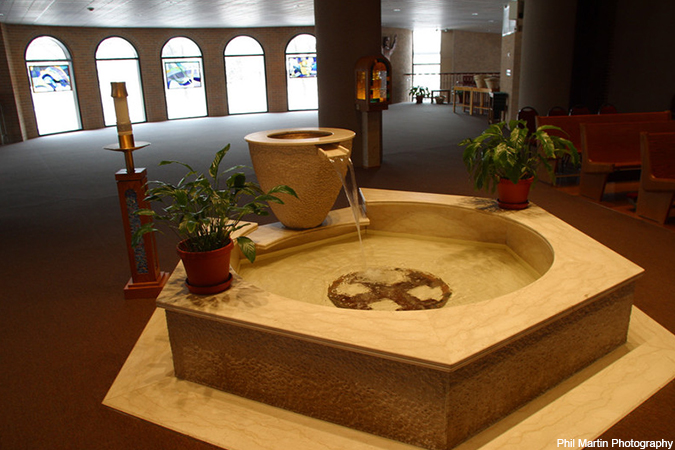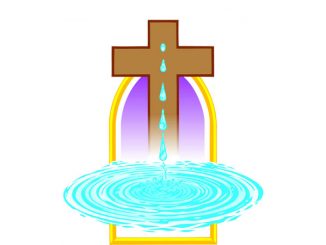
An established syllabus and well-planned lessons can be key to effective catechesis. But what happens when we’re ready to move on to the next activity or lesson and our class isn’t? I’ve written before about how going with the conversational flow can lead to interesting places we hadn’t anticipated, but what happens when the conversation continues over a few weeks rather than a few minutes?
It happened to me last year when I taught a Baptism lesson. I concentrated mostly on infant Baptism, because I thought it was something my first-grade class could relate to, having seen it at Mass. But I also mentioned that grown-ups can be baptized as well. One little girl raised her hand and asked incredulously, “So a grandma can be baptized? For real?” I answered her question without going into a lot of detail, because I thought it might too much for them and I was watching the clock, ready to move to the next part of the lesson.
Another child raised a hand with a question about adult Baptism. Then another. This was uncharted territory for me. I’d never seen six-year-olds so interested in adult Baptism. I promised to bring in a video the following week. I got busy during the week, and it slipped my mind. The topic came up during review the following week, and I had to admit sheepishly I’d forgotten the video. Again, I thought that was going to be the end of it. When prayer time came around, a child prayed for “all the grown-ups getting baptized.”
I remembered that I needed to meet my students where they were. I was so concerned with teaching, I’d forgotten to facilitate an encounter with Jesus, as Joe Paprocki so wisely advises. I heard their questions, but I wasn’t really listening to what they were asking.
I pushed my syllabus aside and created an entire lesson around adult Baptism. I taught my first-graders what RCIA is, what catechumens do, how long the process takes, what the Sacraments of Initiation are, and why the Easter Vigil is important. We talked about light, the paschal candle, and baptismal candles. They were rapt; it was weird and exciting and energizing. What I thought would be too much for them was actually facilitating an encounter with the Spirit.
We watched videos of adults being baptized in different ways. One was at a church where the catechumens stepped into a pool and took a step down further into the water with each answer after the profession of faith. I stopped the videos every time someone had a question. While this stop-and-start method would normally bother me, the children didn’t mind one tiny bit. It gave them time to ask questions and process the answers. The questions ranged from the theological (Why is there so much water?) to the practical (What if the floor is slippery when they get out of the pool?) to the personal (Are the people embarrassed to be standing up in front of everyone?).
Empowered with their new understanding, my group felt engaged with our parish catechumens. We decided to “adopt” them for Lent. We made cards for them and made them part of our Lenten prayer practice. A seemingly random question about a grandma being baptized brought us together as a family of believers.
Fully aligned to the USCCB’s most recent changes to the rite of Baptism, Springs of Faith is a baptismal preparation and family formation program thoughtfully created to meet the needs of young adults and families who long for a community of faith and are considering having their children baptized in the Catholic Church.





Great article! Yes, first graders can be SO curious about the world, and you have to address that curiosity. They can be pretty persistent! And when you can provide as much of a “real world” type experience with solid background information, the concepts take hold much better. Thanks for sharing your story!